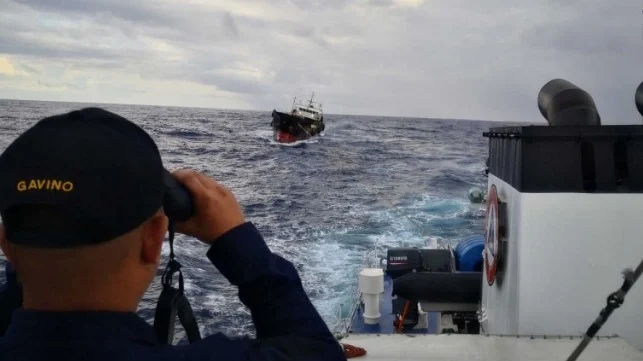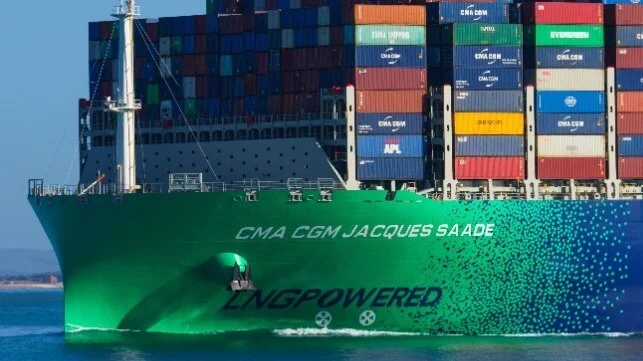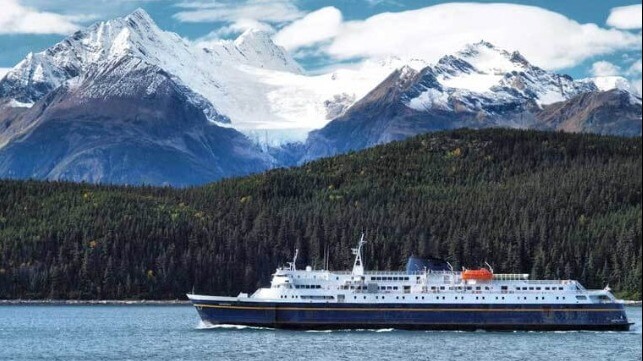 At COP25 in Madrid, the International Union for Conservation of Nature (IUCN) released the comprehensive report “Ocean deoxygenation: everyone’s problem”. The report on oxygen in the global ocean was produced by about 70 leading researchers around the world, including WMU Professor Olof Linden. The work was coordinated by the IUCN and was financed by the Ministry of the Environment in Sweden.
At COP25 in Madrid, the International Union for Conservation of Nature (IUCN) released the comprehensive report “Ocean deoxygenation: everyone’s problem”. The report on oxygen in the global ocean was produced by about 70 leading researchers around the world, including WMU Professor Olof Linden. The work was coordinated by the IUCN and was financed by the Ministry of the Environment in Sweden.
Hailing the release of the report, WMU President, Dr. Cleopatra Doumbia-Henry, said, “The IUCN’s milestone ocean deoxygenation report underscores the urgency of safeguarding our ocean and WMU is a proud contributor to this critical research. Our ocean is the lifeblood of humanity. We cannot afford to lose precious time in ensuring that we achieve the United Nations Sustainable Development Goal 14 that is focused on sustainable use and conservation of the ocean.”
The 588 page report analyses various aspects of ocean deoxygenation. The report, in its entirety, can be accessed here. A brief summary by Professor Linden is as follows:
On oxygen reduction in coastal waters/regional seas
About 20 years ago, Professor Rosenberg and others, showed that about 400 coastal areas around the world were affected by oxygen deficiency which resulted in drastic reduction of all higher forms of life. At present, this number has increased to around 1000, but such figures are becoming increasingly irrelevant as local “hot spots” now coalesce so that entire coasts around Europe, America, and Asia are more or less regularly or permanently affected by oxygen deficiency. Hence we need to start talking about regional or even continental oxygen deficiency problems of coastal oceans.
- On oxygen reduction in oceanic basins
For several decades, we have seen tendencies to significant oxygen depletion in central oceanic basins – that is, hypoxia and even anoxia over areas that have global significance for the generation of the oxygen in the atmosphere.
- On the causes for the oxygen reduction
In coastal regions, eutrophication is of central importance, i.e. the outflow of organic matter and nutrients from land continues to increase. This is due to intensive agriculture and forestry, as well as urbanization, which are linked to human population increase, ever growing consumption of materials and energy, and that more and more people are moving to coastal areas (for example, in China at least 200 million people have moved to 6 coastal provinces since 2000).The reduction of oxygen levels in central ocean basins is partly due to the warming of the planet: warmer water contains lower concentrations of oxygen. Much of the heat that is added to the atmosphere due to the greenhouse effect (i.e. the increase of CO2 in the atmosphere) is absorbed by oceans and seas. We can now measure the temperature increase in all parts of the water column, but of course the temperature is increasing more rapidly in the surface water.
The increase in temperature in oceanic surface waters leads to reduced mixing (circulation) so that oxygenated bottom water cannot reach the surface because the stratification in the water mass is reinforced by greater temperature differences between surface and deep water.
A number of other factors also play a role, such as more CO2 in the sea, and higher temperature stimulate photosynthesis leading to more production which increase the degradation and therefore increase oxygen consumption.
- The effects on marine life
Decreasing oxygen concentrations affects all higher life forms. Large areas in the Baltic Sea, the Gulf of Mexico, the Black Sea, the Bohai Sea, the South China Sea, the Bay of Bengal, etc., are now basically dead. What is new information in this report is that we are also beginning to see oxygen deficiency in central oceanic basins high up in the water column. We see such hypoxic areas in the southern and tropical Atlantic and the Pacific.
















